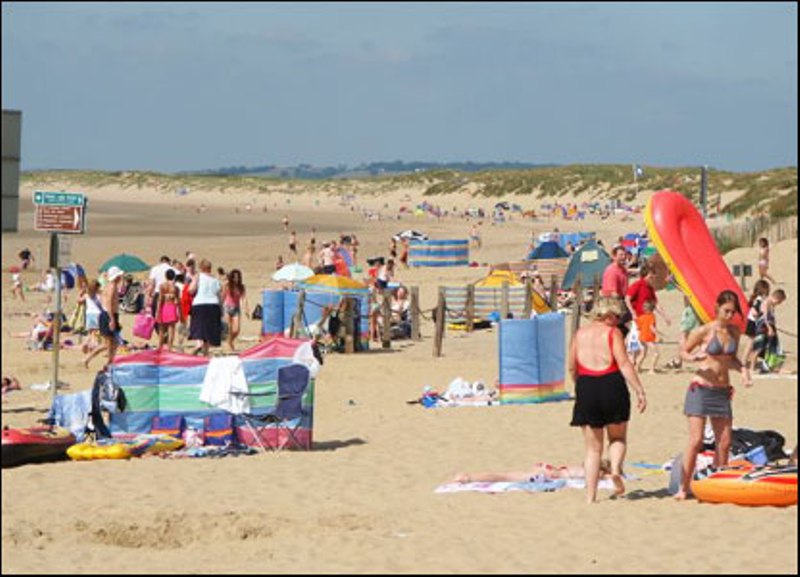Wednesday July 1 was the hottest day of the year so far and, not surprisingly, Camber beach proved an attraction, being visited by an estimated 15,000 people. The hot sun resulted in five serious medical incidents and countless cases of sunburn. In addition threw children went missing although all were later found safely. To help keep track of adventurous kids, Camber Sands can provide wristbands on which name and mobile number can be written – a good idea that could save many families that heart-stopping moment when they realise a young child is missing.
The Royal Life Saving Society UK (RLSS UK), the drowning prevention charity, has issued a warning as temperatures across Britain are set to hit a scorching 35C. The charity has appealed for people to take note of simple safety messages to avoid a repeat of last summer’s tragedies when many people lost their lives cooling off in unlifeguarded open water, not suitable for swimming. Figures released from the National Water Safety Forum (NWSF), of which RLSS UK is a partner, earlier this month revealed that the peak summer months of July and August witnessed the most deaths in 2014.
So, with temperatures on the rise, it is important people make the most of the weather and enjoy the water but do so safely at sites designated for swimming.
RLSS UK’s Director of Volunteer and Community Education, Mike Dunn, said: “Last year saw a tragic amount of preventable deaths . . . . any drowning is a tragedy but the number of people who lost their lives last summer was not only extremely sad but extremely worrying.”
Figures show the age group with the highest number of fatalities (27) in 2014 were men aged between 20 and 24. Meanwhile, 0 to 19-year-olds accounted for 11 per cent of deaths (38), of which more than half were teenagers aged 15 to 19 (21).
In response, in June 20–28 this year, RLSS UK’s annual campaign, Drowning Prevention Week, focussed not only on primary school aged children but young men and boys. The campaign saw the release of ‘Beneath the Surface – the families’ stories’ where a number of brave families speak out about how a loved-one drowning had affected them. It can be viewed on the RLSS UK YouTube channel.
Dunn added: “We want people to enjoy water, but safely and sensibly – using their common sense and listening to advice. Do not be tempted to cool off in open water, we do not want another summer of tragedy.” Follow the advice below and take note of the dangers to avoid becoming one of the statistics.
Don’t:
Swim at unsupervised (un-lifeguarded sites) including lakes, quarries reservoirs and rivers
Jump into the water until you have acclimatised to the water temperature
Jump into the water from heights or ‘tombstone’
Swim into deep water which will be colder
Do:
Swim at supervised (lifeguarded) sites
Swim parallel with the shore, where you can quickly get to safety
Swim with friends or family, so that you can help each other if you need to
Look for signs and advice about the specific dangers at the place where you are swimming
Think about what you will do if something goes wrong
Contact a reputable outdoor pursuits or coasteering centre if you want to take part in more extreme activities
Dangers of open water include:
The height of the fall or jump if tombstoning
The depth of the water – this changes and is unpredictable
Submerged objects may not be visible
Obstacles or other people in the water
Lack of safety equipment and increased difficulty for rescue
The shock of cold water can make swimming difficult and increase the difficulty in getting out of the water
Strong currents can rapidly sweep people away
All of these hazards can be controlled through proper organisation and planning.
If someone is in difficulty in the water:
Shout reassurance to them and shout for help and ensure the emergency services are on their way (call 999 or 112)
Without endangering yourself, see if you can reach out to them, extend your reach with a stick, pole, item of clothing, lie down or stay secure. Alternatively throw something buoyant to them such as a ring buoy, part filled plastic container, ball or anything that will float.
Keep your eye on them all the time and shout reassurance urging them to propel themselves to safety
(Source: RLSS UK)



